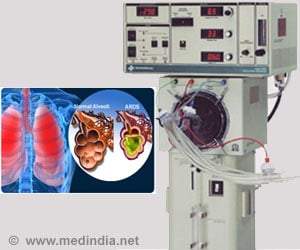Critically ill patients who are exposed to higher daily levels of ozone are more likely to develop acute respiratory disease syndrome (ARDS).

‘Critically ill patients who are exposed to higher daily levels of ozone are more likely to develop acute respiratory disease syndrome, revealed a new study.’





The researchers analyzed exposure using a heterogenous group of 1558 critically ill patients from the Validating Acute Lung Injury Biomarkers for Diagnosis cohort. They found that as long-term ozone exposure increased, so did rates of ARDS, which developed in 563 patients. The association between ARDS risk and ozone exposure was greatest among trauma patients (n=552). The researchers wrote, "In addition, ozone was significantly associated with ARDS only in current smokers and not in non-smokers." Dr. Lorraine Ware of Vanderbilt University School of Medicine said, "The generalizability of this most recent study is enhanced given the large and heterogenous cohort we had at our disposal. However, we acknowledge that future studies need to replicate the findings in more diverse geographic samples so that we may more confidently recommend guidelines for reducing ozone exposure and ARDS risk among this vulnerable group of patients."
As the potentially harmful health consequences of ozone exposure continue to draw more concern, the demand for more research will likely increase because this study as well as another study on ozone and mortality appearing in the same issue of the AJRCCM suggest the need for a stricter ozone standard.
Source-Eurekalert









